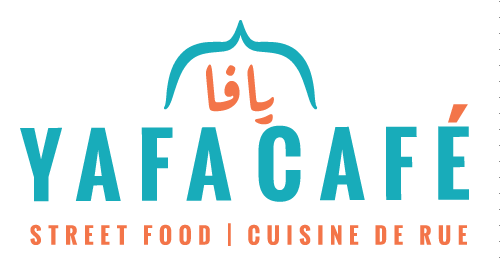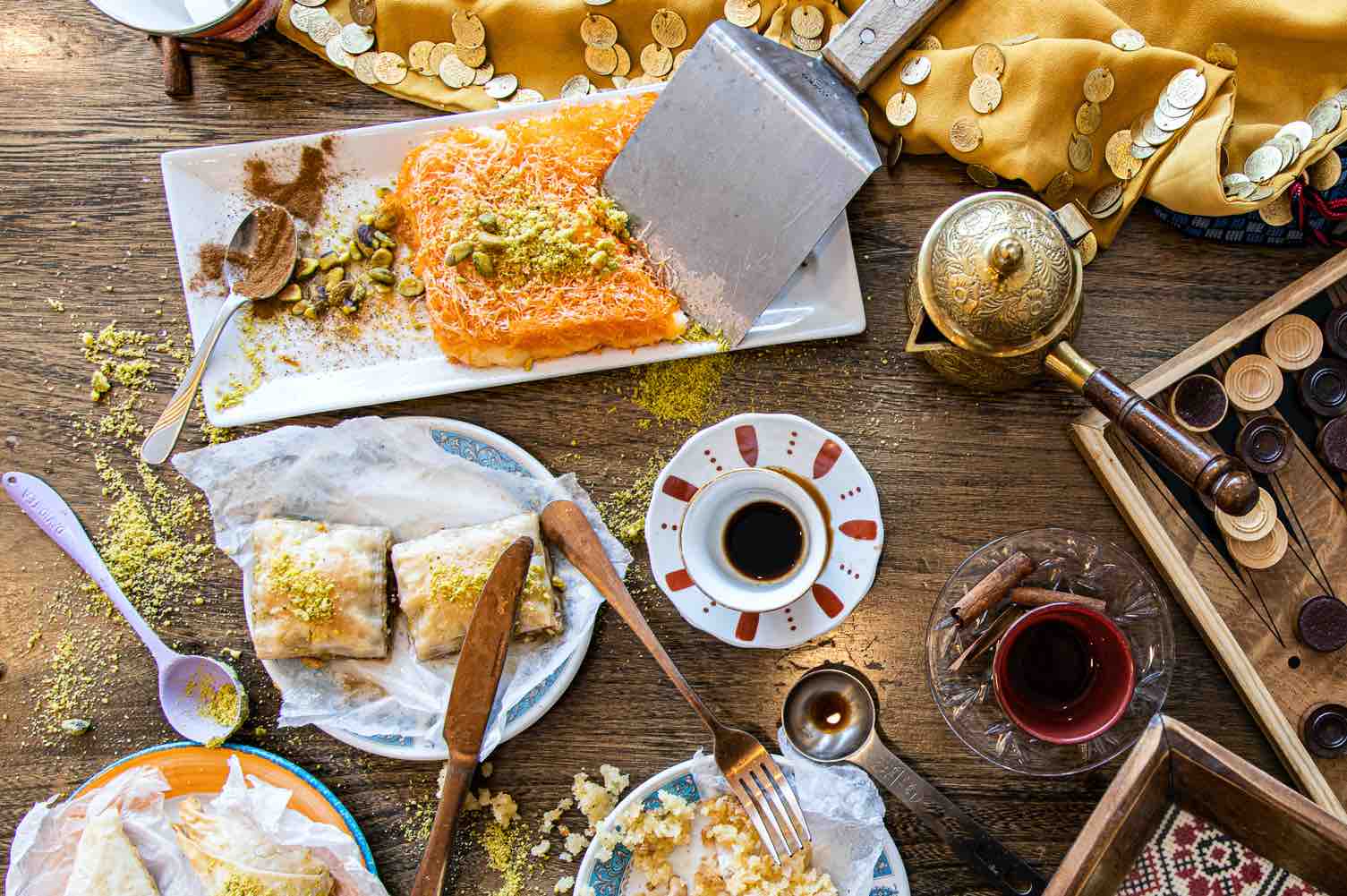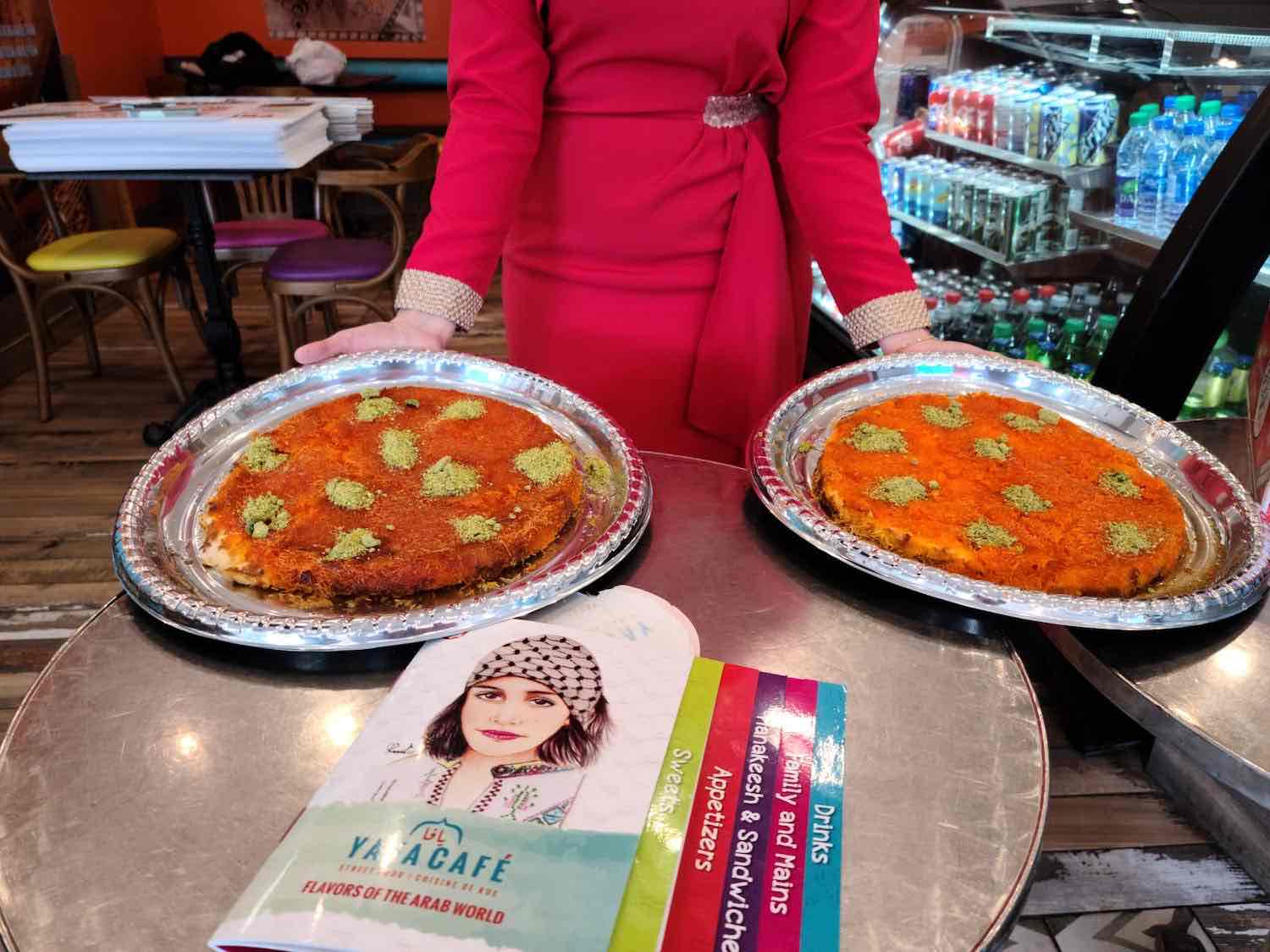We welcomed Chef Mahmoud Darwazeh several months ago now, as our new kitchen Chef, adding to the café’s dynamic team of skilled masters of Arabic cuisine. He takes pride in his mastery of Arabic dishes. As the new culinary lead, his mission has been of innovating across the menu and making the food more craveable than ever.
We’ve been very fortunate to have him. He has over 10 years of experience. Chef Darwazeh is committed to exploring exquisite flavours from around the Arabic World with the aim to delight every palette and entice the senses.
A Chef Well-versed in Arabic Cuisine
Darwazeh previously led the Levantine and Andalusian Cuisine teams at St-Regis, Kempinski, and Grand Millennium in Jordan. He also participated in Culinary Expos and won awards in Bahrain and Oman. As for his specialties, he excels in Msakhan, which translates into English as “heated up.” It’s the most famous of Palestinian dishes, a perennial favorite on menus that comes to the fore during celebrations such as the olive harvest season to celebrate freshly pressed oil. He also masters the Knafeh Nabulsieh, the jewel of Nablus, where he is originally from in Palestine.
Knafeh Nabulsieh
Knafeh is, among many other things, is the pride of Palestinian dishes. If you ever get the chance to visit a Palestinian home, you would surely be welcomed with warmth, respect, hospitality, food and of course, knafeh! When Palestinians make confections, they go full hog – no skimping on fat or sugar. However, you won’t find many chocolate, cake or pie-like desserts. The reigning star is the Knafeh Nabelsieh, made with shredded wheat, filled with cheese pastry soaked in sticky blossom syrup and sprinkled with pistachio. Be sure to go in hungry and leave calorie counting at the door!
This Palestinian dessert is often served at special occasions. It is made from kadaif dough (shredded phyllo pastry) which looks like vermicelli noodles. The dough is stuffed with warm goat cheese, drenched in syrup and topped with pistachios. This hallmark dish originated in the Palestinian city of Nables. Knafeh plays a central role in Palestinian cuisine. It is most famous throughout the Arab world including the Balkans. It is also featured in Turkish, Greek and Levantine cuisine. Baking Knafeh requires patience and care.
Making Knafeh
Want to know how to make knafeh? It’s not as hard as it seems, it just requires lots of hand mixing.
Ingredients
Cheese
- 500 grams of Nabulsi or Akkawi cheese
- 300 grams Mozzarella cheese
- ¼ cup sugar
- 1 teaspoon Mazaher (orange blossom water)
Ideally, you would use Nabulsi cheese. Nabulsi cheese is a white sheep or goat milk cheese, with a very mild yet slightly tangy taste and it melts beautifully and becomes elastic. If you don’t have the Nabulsi cheese you can use Akkawi cheese.
Dough
- 1 pack (500 grams) of Knafeh dough (shredded Phyllo or Kataifi may also be purchased from Sobey’s or Greek stores)
- 1 to 1½ cups rendered ghee or Samneh
- ¼ cup pistachios, chopped
- 2 tablespoons butter to ghee
- 1 teaspoon of Knafeh (orange colouring)
Sugar Syrup (Qater)
- 4 cups sugar
- 2 cups water
- ½ lemon, squeezed
- 2 tablespoons Mazaher
Directions
Sweetening the Cheeses
- Cut the Akkawi and Mozzarella cheese into small pieces
- Place each variety into a separate bowl.
- Cover both cheeses with water and soak for at least 2 hours, changing the water every 30 minutes, to unsalt.
- Drain both cheeses completely (this is a very important step—there cannot be any water remaining in the cheese).
- Grate or squash the cheese.
- Mix with sugar, and Mazaher.
Preparing the Qater
- In a large saucepan combine 4 cups sugar, 2 cups water, 1 tablespoon lemon juice and 1 tablespoon Mazaher
- Bring to boil and cook until sugar is dissolved.
- Decrease temperature continue cooking for 15 minutes on low heat, until the sauce thickens; let cool.
- Then add the remaining tablespoon of Mazaher.
Kneading the Knafeh
- Shred the Knafeh by hand to pull apart all the threads. The idea is to take a tight skein and turn it in to a light fluffy pile. This is the fun part and often therapeutic! You may also chop Knafeh dough with a sharp knife or in the blender.
- Mix the dough with the hot ghee on low heat for 5 to 10 minutes or until dough absorbs all the butter.
- Keep mixing by hand.
- Mix the extra 2 tablespoons butter or ghee with the Knafeh colouring.
- Spread the colour in a 17″ x 12″ pan.
- Spread 2/3 of the dough in the pan over the colour and press well.
Putting it all together
- Preheat at 350⁰F.
- Spread the cheese mixture over dough evenly.
- Cover with the remaining dough and press well.
- Place the knafeh in lower rack and bake for 30 minutes.
- Put ½ cup qater in a tray of similar or larger size.
- Remove the knafeh from the oven and flip the tray that has the Knafeh over onto the other tray that has the qater.
- Return to oven and bake for 10 more minutes.
- Add more qater if needed.
- Garnish with pistachios. Serve hot.
Help our restaurant thrive!
Order up:
- Check out our menu and call us at 204-221-1636
- Come for dine-in experience
- Browse Door Dash or Skip The Dishes and place your order









